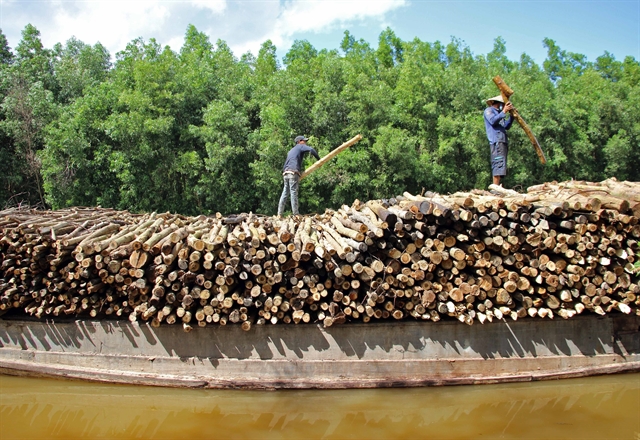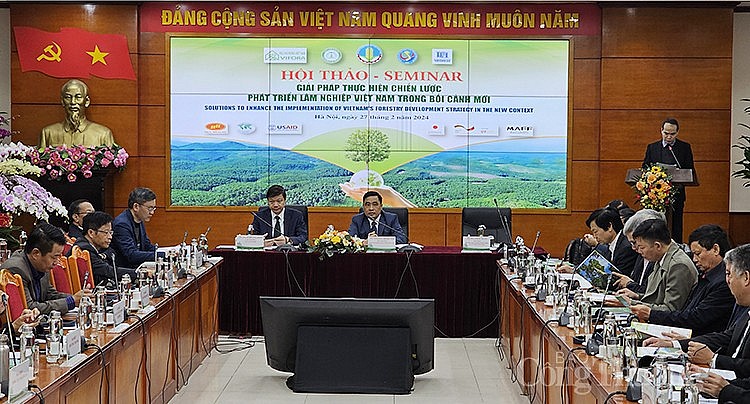
The forestry sector has seen steady growth of 4.6 per cent per year thanks to a shift in structure, while more than 260,000 hectares of forest are planted every year, according to the Department of Forestry.
In a seminar on Tuesday discussing solutions to implement the development strategies for Việt Nam’s forestry in the new context, the department’s deputy director Triệu Văn Lực reported that the sector had seen improvements in its economic, welfare and environmental aspects.
The legal frameworks and policies on forest management, protection and development as well as forestry production were implemented comprehensively, he said.
The quality and productivity of forest planting had increased, providing more than 70 per cent of raw materials for forest product processing for exports and domestic consumption.
Wood and forest product export value had been on the rise, reaching a yearly average of US$15.8 billion with a high trade surplus ratio.
Revenue from forest environmental services totalled VNĐ3.65 trillion ($148 million) per year on average.
In 2023, this figure was VNĐ4.13 trillion ($167.5 million), of which VNĐ997 billion ($40.4 million) came from carbon absorption and storage.
This had helped reduce the pressure on the state budget, covering the protection expenses for around 7.3 million hectares of forest.

According to reports presented at the seminar, the forestry sector directly employs around five million workers.
Forest protection policies include assigning different areas of the woods to local households, individuals and communities, which provides them with stable incomes and better livelihoods, bolstering poverty reduction in rural and mountainous areas.
Forest coverage remains at 42.02 per cent, with strengthened management of natural forests, at which wood exploitation has been limited.
Forest protection and development has also seen positive developments that contribute to water and environmental security, global commitments on climate change, greenhouse gas reduction, green growth, circular economy and other sustainable development goals, according to the reports.
However, the implementation of the forestry development strategy still has many bottlenecks and challenges such as overlaps in the planning of land for usage and forest land (special-use forest, protected forest and production forest), according to the forestry department’s deputy director.
Lực added that the legislation, law implementation and planning for forestry was lagging behind actual demand.
The productivity and quality of planted forests remain modest, while there had been multiple challenges in growing special-use and protected forests, he said.
Meanwhile, financial support for forest development was very limited and largely failed to act as a motivation for the cause.
The development of the wood and forest product processing industry was not yet sustainable, with a majority of businesses being small to medium scale.
They also had limited capacity in terms of controlling the domestic market and branching out to foreign ones, while there is little connection for value chain-based cooperation.
Addressing the seminar, Deputy Minister of Agriculture and Rural Development Nguyễn Quốc Trị said that deputies should focus the discussion and analysis on the legal system and international commitments that affect the forestry sector, thereby bringing forward solutions and recommendations to improve strategy implementation in the new context.
(VNS)




